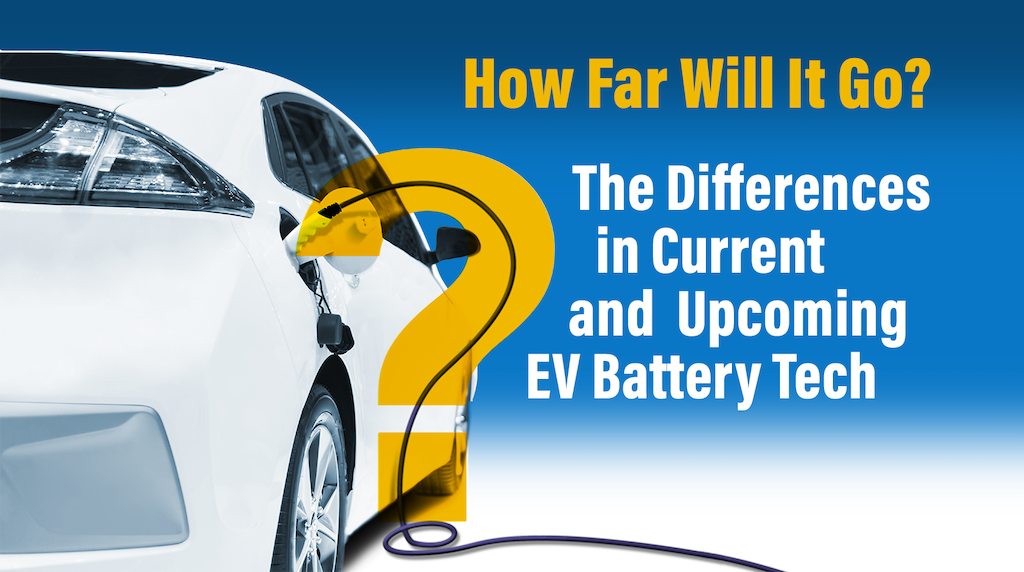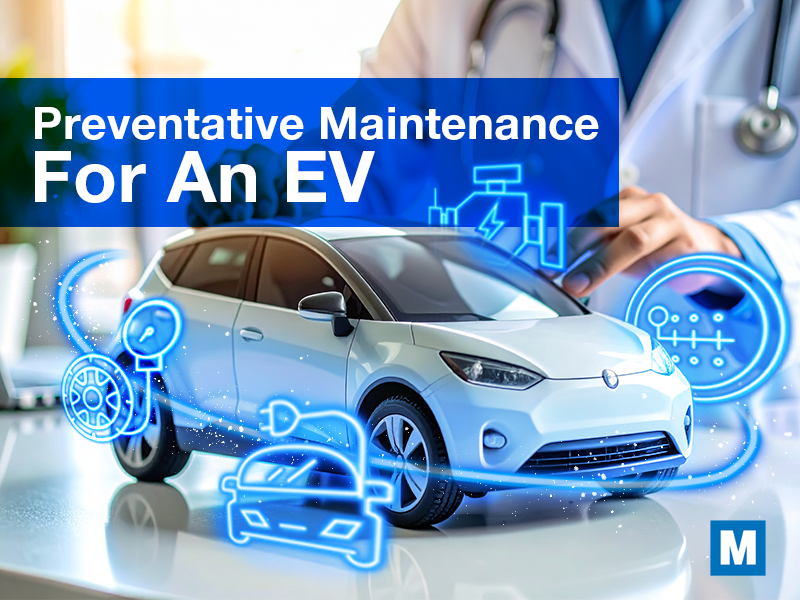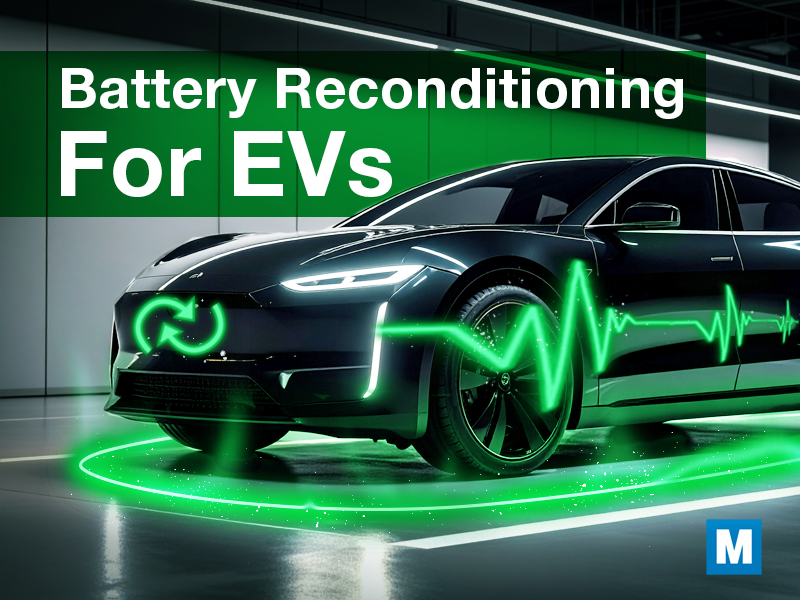The auto industry is in the midst of a revolution, arguably second to the first mass-market production of the Model T. Electric vehicles are being announced and released by virtually every carmaker around the world. And while there’s quite some time until the majority of vehicles on the road are EVs, there are monumental leaps and bounds being made in EV battery tech.
More than half of potential car buyers say that range anxiety is a hurdle to buying an EV. Whether due to capacity limitations or the time it takes to recharge a battery, building and integrating better batteries is going to be absolutely crucial in the next decade.
Here’s where current EV battery technology is, and what you might see by the end of the decade.
Lithium-Ion Batteries
An overwhelming majority of EVs are built with lithium-ion battery packs. This type of battery is found in the best-selling EVs on the market today and are purported to be in the models coming in the next few years as well. Generally, li-ion batteries offer high energy density and are lightweight compared to older tech, and they’re safe to charge. They have a low discharge rate and deliver consistent energy throughout discharge.
However, li-ion batteries are not faultless. Despite being less than half the weight of lead-acid batteries, they are quite heavy when long-range needs are considered. Charging is comparatively fast as well, but still takes much longer than refueling an ICE vehicle.
Perhaps the most prevalent concern for li-ion technology is in its materials. Whether you’re looking at the most common Lithium Nickel Manganese Cobalt Oxide (NMC), Lithium Nickel Cobalt Aluminum Oxide (NCA), Lithium Manganese Oxide (LMO) or Lithium Iron Phosphate (LFP) designs, they all use rare earth metals. Although it’s difficult to say with certainty, sourcing these rare and controversial materials appears unsustainable.
For today’s Li-ion batteries, each composition has strengths and weaknesses.
- NMC batteries have moderate performance, energy, and cost comparisons, but their thermal stability falls short of other options.
- NCA batteries tend to be more expensive and produce excellent results for specific energy and power, but they’re more volatile.
- LMO batteries are among the most cost effective on the market now and are average in terms of energy capacity, but have the lowest performance and lifespan.
- LFP batteries dominate due to their thermal stability, safety, cost, and lifespan, but their specific energy and power are below average.
Nickel Metal Hydride Batteries
For hybrid-electric vehicles, Nickel Metal Hydride (NiMH) technology has been the solution most often chosen. Carmakers like Toyota have used NiMH batteries in hybrids since the late 1990s, and recent developments like bipolar NiMH batteries continue to keep the tech quite relevant. They cost about half as much as li-ion battery packs of the same size.
Like li-ion tech, NiMH batteries use rare earth materials like cobalt and lanthanum, and high levels of nickel. Thus, environmental concerns also abound for these batteries.
NiMH batteries are used for applications with less demand, which is why hybrids employ them. As well, they have higher self-discharge levels and can lose capacity if they’re overcharged, but that’s negated by moderating the charge level and rate. Slower charging is best for NiMH batteries, and it’s one of the reasons that longer-range full EVs won’t embrace this tech.
Solid State Batteries
Perhaps the most promising development for EVs is solid state batteries. They’re very much like lithium-ion batteries but rather than having a liquid electrolyte to carry the energy from one electrode to the other, it’s done through a much more energy dense solid material. Carmakers are investing hundreds of millions of dollars into solid state batteries since it will greatly reduce the size and weight of the batteries and make them more stable.
Because solid state batteries are more energy dense, they can recharge in a fraction of the time of an li-ion battery with a liquid electrolyte. Another massive benefit is longevity; where a li-ion battery degrades noticeably after 1,000 charging cycles, solid-state batteries are said to “maintain 90% of its capacity after 5,000 cycles”.
There’s some distance to go until solid state batteries are ready for market, particularly in the area of reducing production costs. There’s promise that it will be possible in the next few years.
Silicon Anode Batteries
Graphite is used plentifully in EV batteries, but it has limitations in capacity. Developers are working on designs that replace the graphite in the anode with mesoporous silicon microparticles and carbon nanotubes. Silicon has roughly ten times the capacity as graphite, and implementing it as a key element in battery cells could vastly improve both range and charging times.
One of the largest benefits for silicon anode batteries is a reduced reliance on graphite, replaced with a product that’s refined rom barley husk ash. It’s a step toward lowering dependence on rare earth mineral mining.
Cobalt-Free EV Batteries
Arguably the most controversial material used in EV li-ion batteries due to mining practices in the Congo where it’s most prevalent, cobalt is relied upon heavily in battery manufacturing. Future designs of li-ion batteries could do away with cobalt in the cathode. Because cobalt is so rare and costly, eliminating it will help lower the price for better EV adoption rates.
Instead of cobalt, developers have been working with 89% nickel as well as readily available aluminum and manganese for the cathode. It’s reportedly more energy dense than a typical li-ion battery and can accomplish longer ranges on a single charge too.
Carbon Nanotube Electrodes
Carbon crystallized in a hexagonal pattern is known as graphene, and it’s a single layer of atoms. Battery developers at NAWA Technologies have been able to create carbon nanotubes out of graphene for use as electrodes in EV batteries. Graphene tubes are vertically aligned for the electrode and are extremely conductive, making for ultra-fast carbon electrodes that could be used within the next few years.
The benefits for carbon nanotube electrodes are huge. In addition to ten times the energy capacity, they can be recharged extremely fast. NAWA claims a battery can be recharged 80% in just five minutes. And because graphene can be mass-produced inexpensively, it can reduce battery costs substantially.
Summary
Today’s lithium-ion batteries can take you hundreds of miles on a single charge and last in an EV for years. Future tech will be able to recharge much faster and store higher energy capacities, all in a lighter and smaller battery pack.




